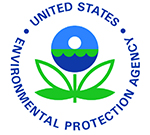 Earlier this month the U.S. Environmental Protection Agency (EPA) released a preliminary pollinator risk assessment for the neonicotinoid insecticide imidacloprid, saying it shows a threat to some pollinators.
Earlier this month the U.S. Environmental Protection Agency (EPA) released a preliminary pollinator risk assessment for the neonicotinoid insecticide imidacloprid, saying it shows a threat to some pollinators.
EPA’s assessment indicates that imidacloprid potentially poses risk to hives when the pesticide comes in contact with certain crops that attract pollinators.
A 60-day public comment period has commenced. After the comment period ends, EPA may revise the pollinator assessment based on comments received and, if necessary, take action to reduce risks from the insecticide.
Bayer, manufacturer of imidacloprid, released a statement saying the assessment initially appears to overestimate the potential for harmful exposures in certain crops, while ignoring the benefits of the product.
“With hundreds of studies conducted and their demonstrated safe use on lawns, ornamentals, golf courses and farmland across the country, we know more about the safe use of neonics to honey bees than any other pesticide,” Bayer said. “New studies continue to confirm their safety to bees and other pollinators when used appropriately. We hope the final risk assessment is based on the best available science, as well as a proper understanding of modern pest management practices.”
The imidacloprid assessment is the first of four preliminary pollinator risk assessments for the neonicotinoid insecticides. Preliminary pollinator risk assessments for three other neonicotinoids, clothianidin, thiamethoxam, and dinotefuran, are scheduled to be released for public comment in December 2016.
A preliminary risk assessment of all ecological effects for imidacloprid, including a revised pollinator assessment and impacts on other species such as aquatic and terrestrial animals and plants will also be released in December 2016.
“The most important thing for specialty applicators to know about EPA’s Jan. 6 release of its first neonicotinoid risk assessment for pollinators is that it is preliminary,” said Karen Reardon, vice president of public affairs for Responsible Industry for a Sound Environment (RISE). “As a stakeholder in the Obama Administration’s National Pollinator Strategy, we remain committed to talking with applicators about product stewardship when using insecticides, including neonicotinoids. Always reading product labels and following all use directions are best management practices we can all perform successfully to protect pollinators. We will be submitting comments.”

